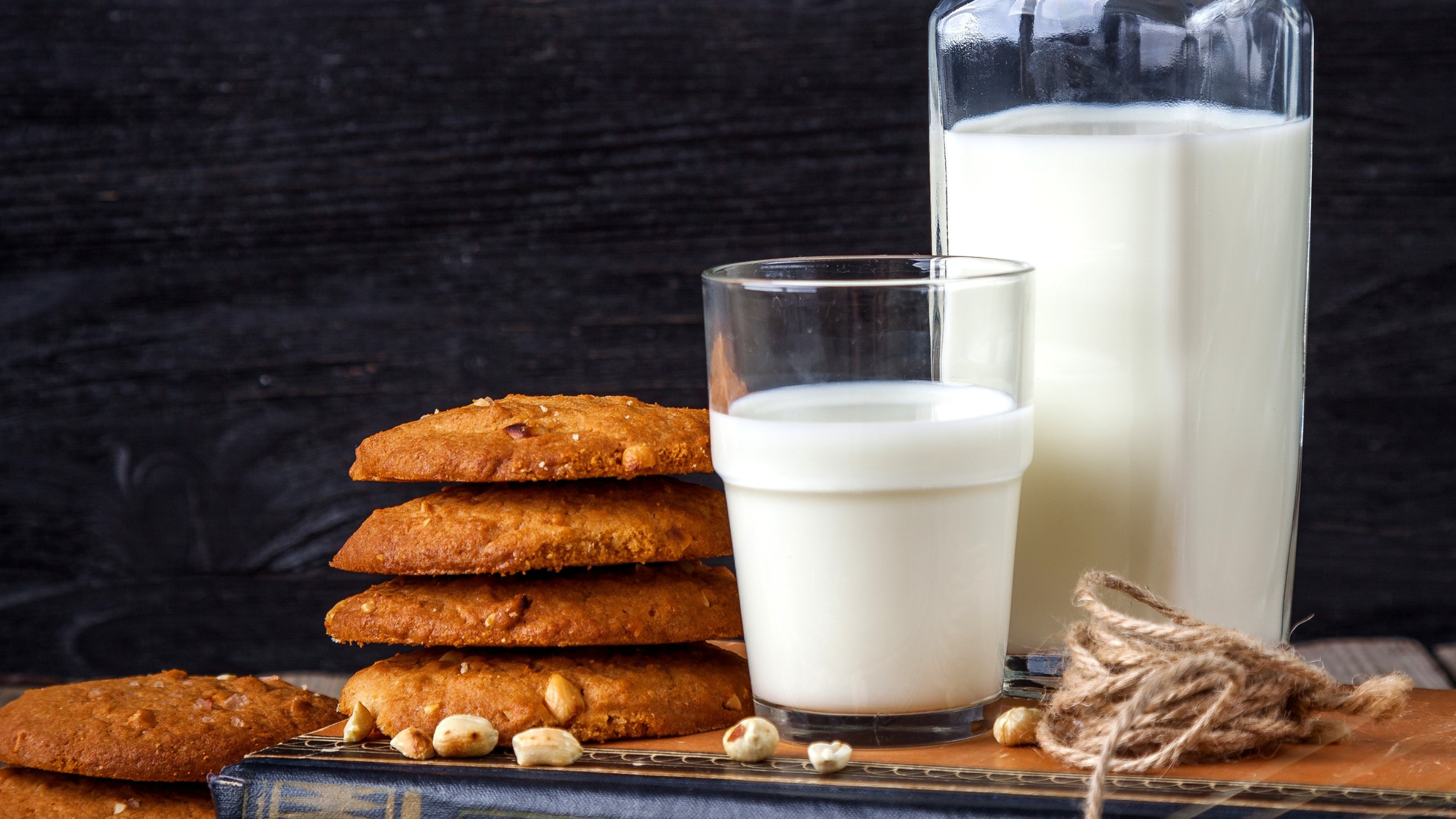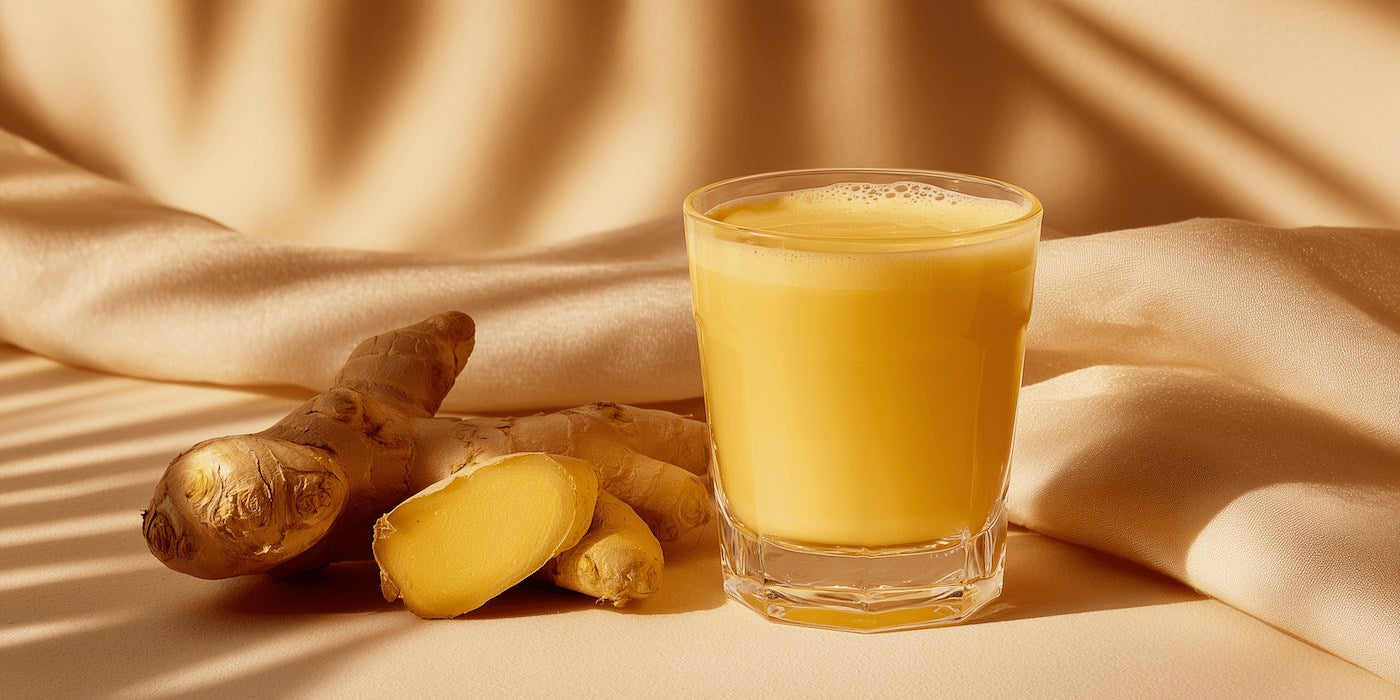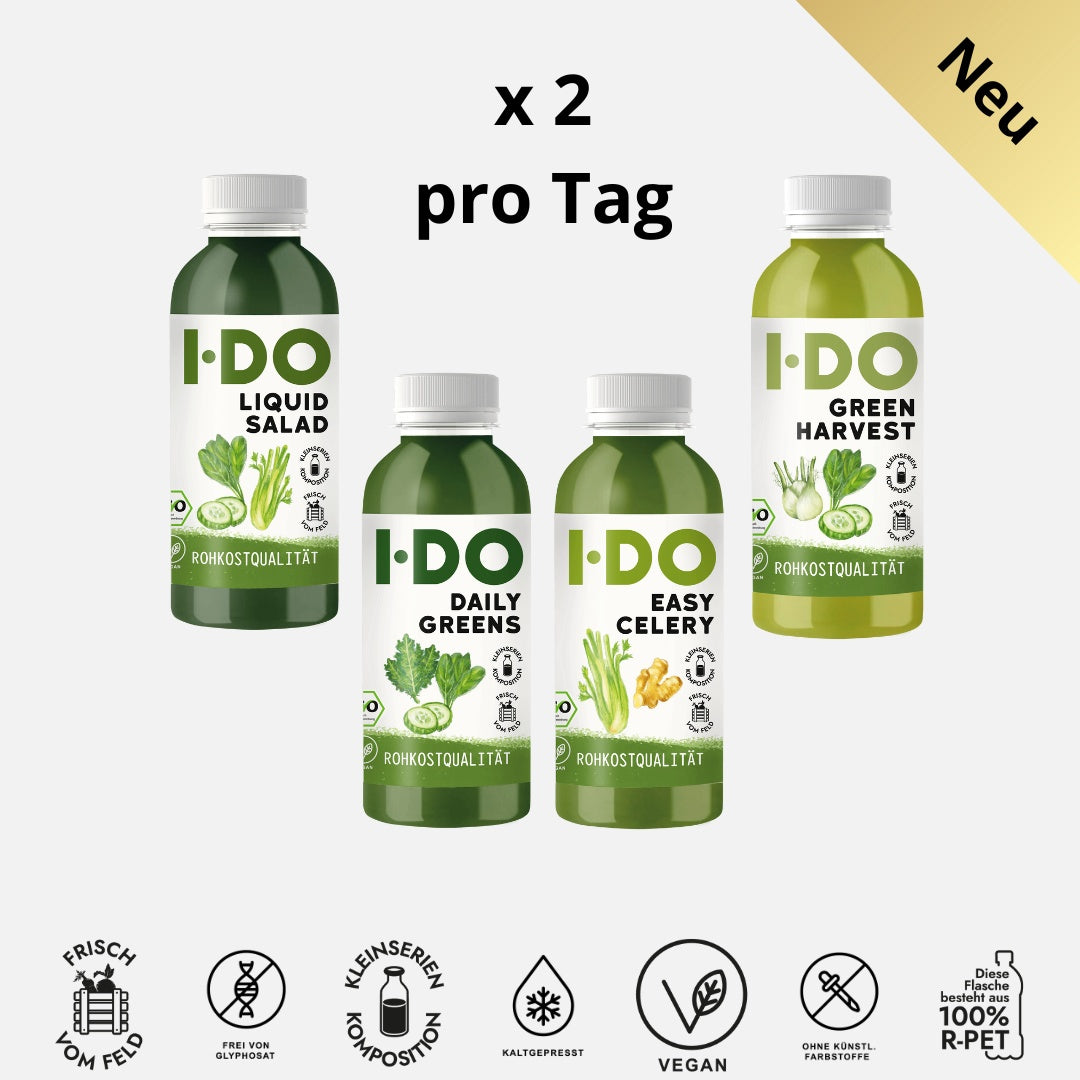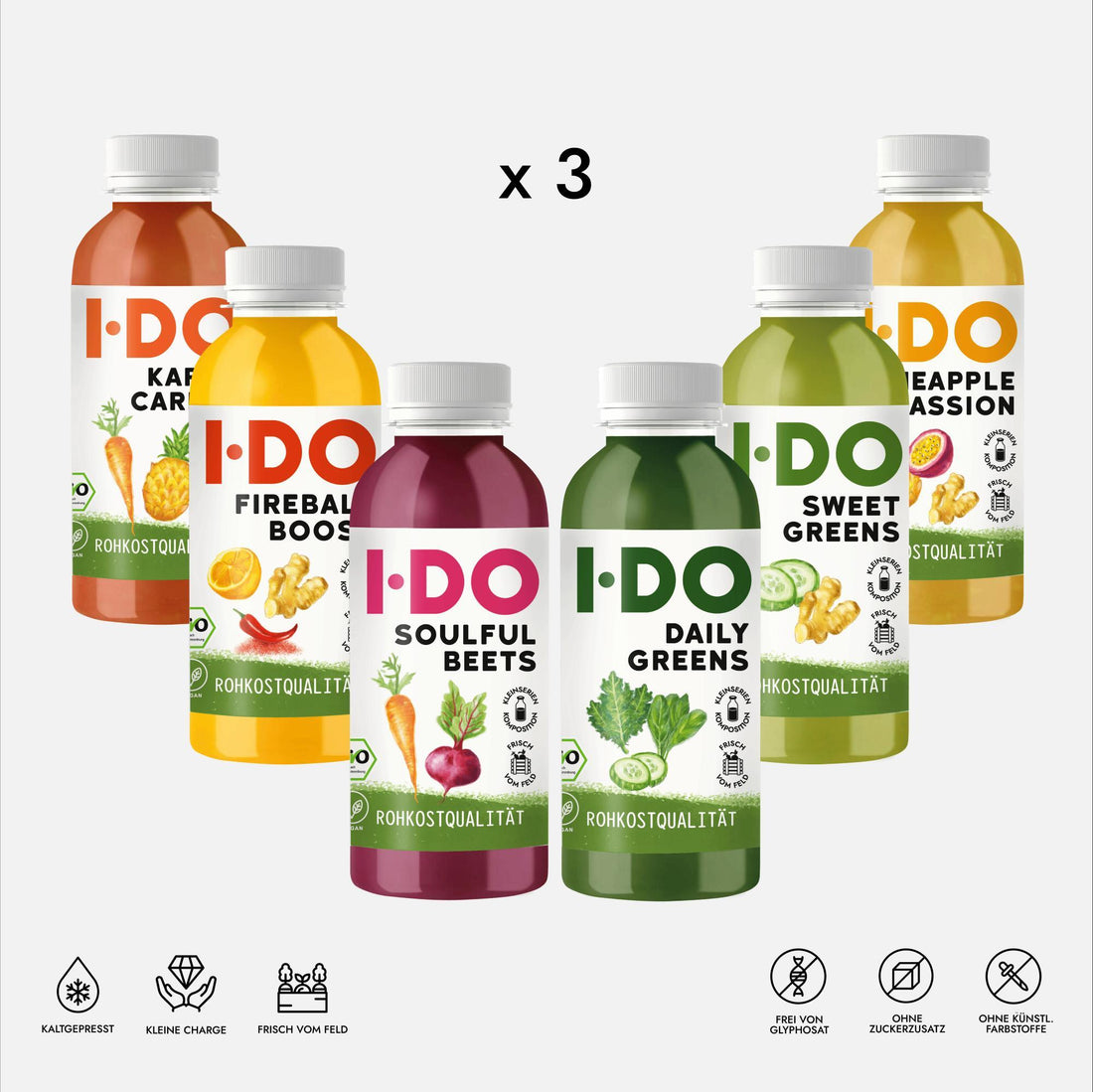Lactose: basic knowledge and chemical structure
Lactose, also known as milk sugar, is another type of sugar alongside glucose and fructose. It is one of the disaccharides - like sucrose (table sugar). Lactose is only contained in natural form in the breast milk of mammals (Seilnacht, 2013), which is unique compared to other types of sugar (Schleip, 2010). In addition, lactose only has about a fifth of the sweetening power of table sugar (Fritzsche, 2009).
From a chemical perspective, lactose is a slightly sweet-tasting substance. Extracted from milk, it occurs as a white powder that is easily soluble in water and consists of the two sugar building blocks glucose and galactose. These two monosaccharide building blocks (simple sugars) are connected to each other by an oxygen atom (Seilnacht, 2013). This results in the molecular formula C12 H 22 O 11 and the following structural formula, which gives you a rough overview of the chemical composition .
In which foods is lactose found?
Lactose is a naturally occurring type of sugar in mammalian milk, with levels varying in different types of milk (Schleip, 2010):
- Cow's milk: around 5 g per 100 ml of milk
- Human milk: around 7g per 100ml milk
- Green Monkey milk: around 10 g per 100 ml of milk
Lactose is a component of all cow, sheep or goat milk products such as cheese, butter, sour cream, whey, cream, quark or milk chocolate. In addition, due to its properties, it is often used in the industrial production of many finished products. For example, lactose can be found in baking mixes, canned goods, breadcrumbs and candies (Seilnacht, 2013), as this gives the food a higher viscosity and makes it easier to enrich proteins. When using lactose in baked goods, a popular browning effect occurs (Schleip, 2010). Finally, lactose is also used as a carrier in the production of medications (Fritzsche, 2009).
processing in the body
Lactose serves as an energy source for the human body, improves the absorption of the trace element calcium into the bones and promotes the bacterial flora in the intestine (Seilnacht, 2013). Lactose cannot be used directly by humans but must be broken down in the body. In the small intestine, the lactose is broken down into its individual components by the enzyme lactase. The split-off monosaccharides glucose and galactose can then pass through the intestinal wall and be used for metabolism (Schleip, 2010). If the body produces the enzyme lactase only partially or not at all, lactose can only be processed to a limited extent or not at all. In this case, intolerance and the well-known lactose intolerance occur (Seilnacht, 2013).
Did you know already? Mammalian infants all over the world have the enzyme lactase to absorb their mother's milk. Originally, the enzyme is no longer produced by adult humans (Paas, 2008). However, mutations and adaptations over thousands of years ensured that lactase was still produced by the human body in adulthood. Because the possible breakdown of lactose offered a major survival advantage, mutation of the lactase gene became widespread in many parts of the world. Lactose is therefore well digested, particularly in countries with intensive dairy and livestock farming. In contrast, many people in Asia cannot tolerate milk, as nature's natural decline in lactase production with age predominates (Helmich, 2022; Seilnacht, 2013).
Lactose intolerance
In Germany, 15 to 20 percent of people are lactose intolerant. In contrast, 80 to 100 percent of people in Africa or Asia cannot tolerate lactose (Paas, 2008). Lactose intolerance can vary greatly. Although some people react with severe symptoms to even the smallest amount of lactose, smaller amounts can often be digested without any problems. Lactose intolerance is therefore very individual (Fritzsche, 2009; Müller, 2022).
The reason for intolerance is the lack of the enzyme lactase, which means that lactose cannot be processed in the small intestine. The body produces lactase only in small amounts or not at all. This means that lactose passes through the large intestine in an unchanged state. The bacteria there break down the lactose into various metabolites such as hydrogen and methane. This process is also known as bacterial fermentation because the lactose ferments (Schleip, 2010). This can cause symptoms such as abdominal pain, flatulence or diarrhea (Seilnacht, 2013). However, the symptoms range from body aches, skin problems, inner restlessness, headaches, dizziness, sleep disorders or even depressive moods (Fritzsche, 2009).
In order to counteract the intolerance, affected people usually consistently avoid foods containing lactose or resort to lactose-free products. In these, the lactose has already been broken down into the simple sugars glucose and galactose, so that they contain less than 0.1 g of pure lactose per 100g - an amount that is usually tolerated even by severe intolerance (Schleip, 2010). Other dairy products such as butter and some hard cheeses contain a very small amount of lactose anyway, so they can often be consumed without any problems (Schleip, 2010).
Another way to deal with lactose intolerance is to take lactase supplements. Those affected consume synthetically produced lactase before a meal rich in lactose so that the enzyme can break down the lactose they have consumed. Existing symptoms caused by intolerance can be avoided or at least weakened (Fritzsche, 2009). Corresponding lactase preparations are available over the counter in pharmacies.
Conclusion
In people who are lactose intolerant, the body does not produce the enzyme lactase at all or only partially, which means that lactose cannot be broken down into its components. The breakdown of lactose in the large intestine causes various symptoms such as abdominal pain or flatulence. In most cases, intolerance can be easily dealt with by avoiding foods containing lactose or consuming lactose-free products. A vegan diet can also solve the problem of lactose intolerance, as no animal products are consumed. Cold-pressed vegetable and fruit juices can also be easily integrated into a lactose-free diet. Our I·DO organic juices are of course completely lactose-free, as they are pressed from 100% organic vegetables and fruit and are not exposed to any additives :)
Sources
Fritzsche, D. (2009). Lactose intolerance . GU health guide. 5th edition. Gräfe and Unzer Verlag.
Helmich, U. (2022). Lactose . Retrieved on May 3, 2023 from: https://u-helmich.de/bio/cytologie/02/021/Kohlenhydrate/Kohlenhydrate-03-2.html
Müller, C. (2022). Lactose Intolerance - Not all dairy products are intolerable. Federal Center for Nutrition. Retrieved on May 3, 2023 from: https://www.bzfe.de/ernaehrung/ernaehrungswissen/gesundheit/unvertraeglichkeiten-frei-von-im-trend/laktoseintolerant/
Paas, D. (2008). The Lactose Intolerance Book - Everything you want to know about lactose intolerance. 2nd Edition. MV Publishing.
Seilnacht, T. (2013). Lactose . Retrieved on May 3, 2023 from: https://www.seilnacht.com/Chemie/ch_lacto.htm
Schleip, T. (2010). Lactose intolerance: When milk sugar makes you sick. Triassic.












